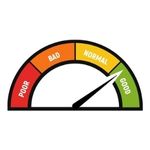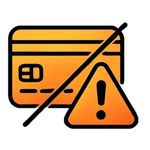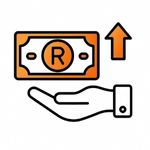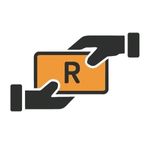
Buying a home is a significant step for many South Africans, and securing a home loan is often a crucial part of this journey. Before banks approve a home loan, they conduct an affordability assessment to ensure that borrowers can manage the repayments without financial strain. This process is guided by the National Credit Act (NCA), which mandates that credit providers assess a consumer’s ability to repay a loan, aiming to prevent over-indebtedness and promote responsible lending practices.
Key Takeaways
- Full affordability assessments are legally required before a home loan is granted: These assessments ensure the borrower can meet monthly repayments based on verified income, expenses, and credit obligations, in line with the National Credit Act.
- Pre-qualification is an informal estimate, not a loan approval: It offers a general idea of how much you might qualify for based on basic financial information, but does not involve document checks or legal compliance.
- A strong financial profile improves your chances of approval: Maintaining a good credit score, reducing debt, ensuring income stability, and saving for a deposit can all positively influence affordability and loan approval outcomes.
Definition of Affordability Assessment
An affordability assessment is a process used by banks and lenders in South Africa to evaluate whether you can reasonably manage the repayments on a home loan. Before a loan is approved, the bank examines your financial position to check if the monthly instalments will fit within your budget. This includes a review of your gross monthly income, the total amount you earn before any deductions such as tax or pension contributions.
An affordability assessment is a process used by banks and lenders in South Africa to evaluate whether you can reasonably manage the repayments on a home loan. Before a loan is approved, the bank examines your financial position to check if the monthly instalments will fit within your budget. This includes a review of your gross monthly income, which is the total amount you earn before any deductions such as tax or pension contributions.
They then assess your net monthly income, which is the amount left after all deductions, and subtract your monthly living costs and other financial commitments. These commitments typically include any existing loans, such as car finance agreements, credit card repayments, and your usual household expenses, like groceries, transport, insurance, and utility bills. The goal is to determine whether you will realistically be able to meet the full monthly repayment without placing yourself under financial pressure.
Getting a home loan is only part of the journey, coming up with a deposit can be the real hurdle. If you’re worried about how to fund that crucial upfront cost, a home deposit loan might be the solution. These specialised loans are designed to help you cover your deposit while keeping your financial planning on track.

How Does an Affordability Assessment Work?
An affordability assessment determines whether you can realistically repay a home loan based on your current financial situation. Lenders use a basic calculation known as the repayment-to-income ratio to reach this decision. This involves subtracting your necessary monthly expenses and existing financial commitments from your net income. The remaining amount is your discretionary income, which indicates how much you can afford to spend on a loan repayment.
To break this down in simpler terms:
- Income refers to your monthly take-home pay after tax deductions have been applied.
- Necessary expenses are unavoidable costs such as groceries, electricity, transport, school fees, and housing.
- Other payments include instalments for existing debt like credit cards or personal loans, as well as regular contributions to savings or insurance policies.
Not sure how much house you can truly afford? Use a loan calculator to crunch the numbers before applying. This tool lets you input your income, expenses, and desired loan amount to give you a realistic view of your borrowing power.
About Arcadia Finance
Once all your expenses have been factored in, the remaining balance, if any, is your affordability amount. This is the figure lenders look at to decide whether you can handle another loan. But the calculation does not stop there. Lenders may also consider other details such as the number of dependants you support, your job stability, and your credit history. These elements together form what is known as the affordability assessment.
Once all your expenses have been factored in, the remaining balance, if any, is your affordability amount. This is the figure lenders look at to decide whether you can handle another loan. But the calculation does not stop there. Lenders may also consider other details such as the number of dependants you support, your job stability, and your credit history. These elements together form what is known as the affordability assessment.
In South Africa, the process is regulated by the National Credit Act (NCA), which is enforced by the National Credit Regulator (NCR). This law requires that all registered lenders perform a full affordability check before granting credit. They are only permitted to offer loans if there is evidence that the applicant can manage the repayments without falling into financial distress.
The aim of the affordability assessment is to protect consumers from borrowing beyond their means. The law was amended with this objective in mind, to curb reckless lending and reduce the number of South Africans falling into serious debt. While the process may appear stricter, it serves to prevent people from taking on loans they cannot repay, especially for items or services that may not be essential.

Pre-Qualification vs Full Affordability Assessment
When applying for a home loan in South Africa, it helps to understand the difference between pre-qualification and a full affordability assessment. While both assess your financial ability to repay a loan, they serve different purposes and carry different weight in the approval process.
Pre-Qualification
PRe-qualification gives you a quick estimate of what you might be able to borrow. It’s based on basic financial information you provide, such as income, expenses, and existing debt, but does not include document checks or a credit report. This process is useful when you want to gauge what type of property you can afford before beginning your home search. It is a planning tool, not a formal approval.
Full Affordability Assessment
The full affordability assessment is a legal requirement under the National Credit Act. It involves a detailed review of your income, expenses, credit history, and supporting documents such as payslips and bank statements. The lender uses this information to decide whether you can manage monthly repayments over the long term. Unlike pre-qualification, this step is part of the official home loan application.
Documents Required for a Home Loan Affordability Assessment
When applying for a home loan in South Africa, providing the correct documentation is essential for the affordability assessment. Lenders require specific documents to verify your identity, income, and financial stability. The required documents vary depending on your employment status.
Standard Documents for All Applicants
Regardless of employment status, the following documents are typically required:
- Identity Document: A valid South African ID or passport.
- Proof of Residence: A recent utility bill or lease agreement confirming your current address.
- Bank Statements: Recent bank statements, usually covering the last three months.
- Offer to Purchase: A signed agreement between the buyer and seller outlining the terms of the property sale.
Additional Documents for Employed Individuals
If you are employed full-time or part-time, you will need to provide:
- Payslips: Recent payslips, typically covering the last six months, to verify your income.
- Employment Contract: If you are newly employed and do not have sufficient payslips, an employment contract may be required
Additional Documents for Self-Employed Individuals
Self-employed applicants must provide more detailed financial information:
- Financial Statements: Up-to-date financial statements for your business, usually covering the last two years.
- Tax Assessments: Recent tax assessment documents to verify income declared to the South African Revenue Service (SARS).
- Accountant’s Letter: A letter from a registered accountant confirming your income and the financial health of your business.

Factors That Are Considered During a Home Loan Affordability Assessment
When applying for a home loan in South Africa, lenders must conduct a detailed affordability assessment before approving the application. This assessment is required under the National Credit Act and is used to determine whether the applicant can manage the repayments over time without becoming over-indebted. The assessment includes several checks and verifications across income, expenses, and existing debt.
Income Verification
All income sources must be verified through supporting documentation. This includes monthly salary or wages, which must be proven using payslips and recent bank statements. In cases where the applicant has additional income, such as rental earnings from investment properties or other consistent streams, these must also be backed by proof to be taken into account. If the applicant has confirmed salary increases or other forms of future income that can be verified, these may also contribute positively to the outcome of the assessment.
Evaluation of Expenses
A critical part of the process involves analysing the applicant’s day-to-day living expenses. This includes essential costs such as groceries, electricity, water, transport, cellphone bills, school fees, medical aid, and insurance premiums. Lenders compare these figures against the National Credit Regulator’s standard expense guidelines, which offer a reference for reasonable living costs based on income levels and household circumstances.
Credit and Debt Commitments
Lenders will check for any existing credit agreements using a credit bureau report. This covers credit cards, store accounts, car finance, personal loans, and other formal credit agreements. If the applicant has a current bond or any debts that are to be settled before registration of the new bond, these will also be considered. The aim is to determine how much of the applicant’s income is already committed to repayments and whether there is enough capacity to afford the new loan.
Joint Applications and Shared Expenses
For those applying with a co-applicant, the assessment allows for shared versus individual expenses to be declared. This distinction helps lenders build an accurate financial profile for each person involved in the application. Shared living costs like rent or utility bills can be split accordingly, while individual commitments such as personal loans or subscriptions are evaluated separately.

Strategies to Enhance Home Loan Affordability
Improving your financial profile can significantly increase your chances of securing a home loan with favourable terms. Here are key strategies to consider:

Improving Your Credit Score
A higher credit score can lead to better loan offers. To enhance your creditworthiness, ensure all your bills, especially credit-related ones, are paid on time. Late payments can negatively impact your credit score. Aim to use less than 30% of your available credit limit, as high utilisation can signal financial strain to lenders.

Reducing Existing Debt
Lowering your debt levels can improve your debt-to-income ratio, making you a more attractive borrower. Focus on paying off debts with the highest interest rates first, such as credit cards. Merging several debts into one loan with a lower interest rate can make repayments easier and cut down on total interest paid.

Increasing Income Stability and Documentation
Lenders favour applicants with stable and verifiable income. A steady job history, preferably with the same employer for at least two years, can strengthen your application. Submit all required documents, such as payslips and bank statements, to verify your income. For self-employed individuals, ensure your financial records are up-to-date and accurately reflect your income.

Saving for a Larger Deposit
A substantial deposit can positively influence your loan terms. While some lenders offer 100% loans, a deposit can reduce your monthly repayments and total interest paid. Implement a dedicated savings plan to accumulate the necessary funds over time. Investigate if you qualify for any government or employer-sponsored homebuyer assistance programs.
Conclusion
Affordability assessments are a vital part of the home loan process in South Africa, designed to ensure that borrowers can realistically manage their repayments without taking on financial risk. This process, regulated by the National Credit Act, involves a thorough review of your income, expenses, existing debts, and supporting documents. Understanding the difference between pre-qualification and a full affordability check can help you prepare effectively and avoid delays during your application. By improving your credit profile, reducing debt, and saving for a deposit, you can enhance your chances of securing a loan that suits your budget and long-term financial plans.
Frequently Asked Questions
An affordability assessment is used to determine whether you can afford to repay a home loan based on your current income, expenses, and debt obligations. It helps lenders decide if you qualify for a loan without taking on too much financial pressure.
No, pre-qualification is only an estimate of how much you might be able to borrow based on self-reported information. It does not involve a credit check or document verification and is not a formal loan approval.
You’ll typically need a valid South African ID or passport, proof of residence, recent bank statements, and payslips. Self-employed individuals must also provide tax assessments, financial statements, and an accountant’s letter confirming income.
Yes, but your debt will be included in the assessment. If your current debt repayments are high compared to your income, this could affect your affordability and the amount you qualify for.
You can improve your affordability by paying down existing debt, maintaining a stable income, avoiding late payments, and saving for a larger deposit. These steps can improve your credit profile and reduce your monthly financial commitments.





